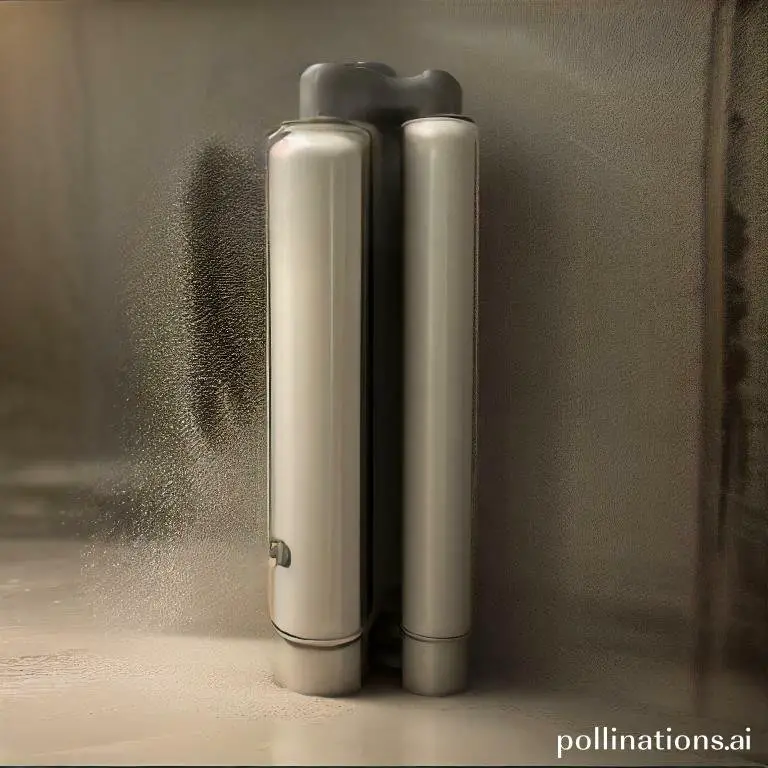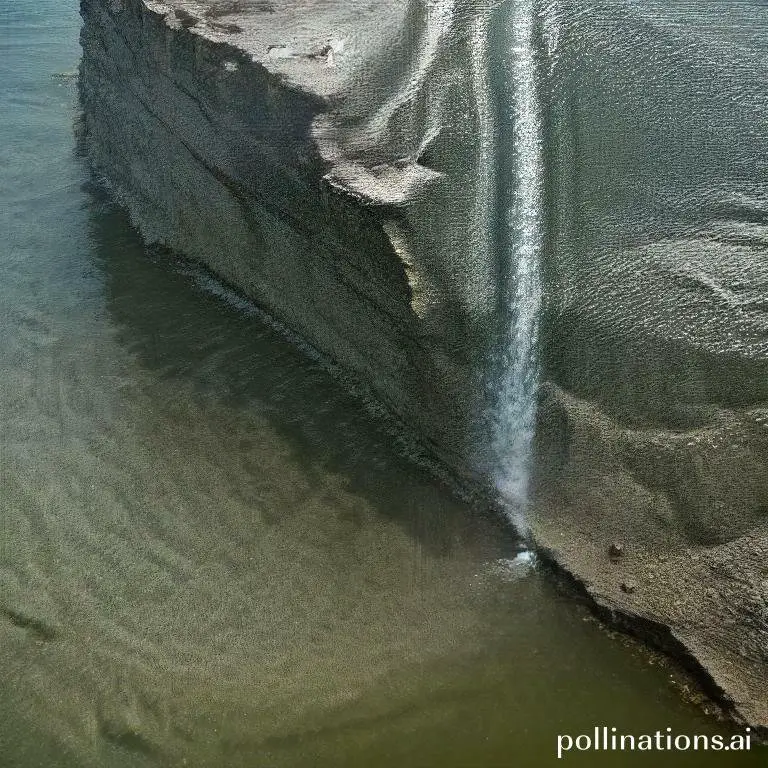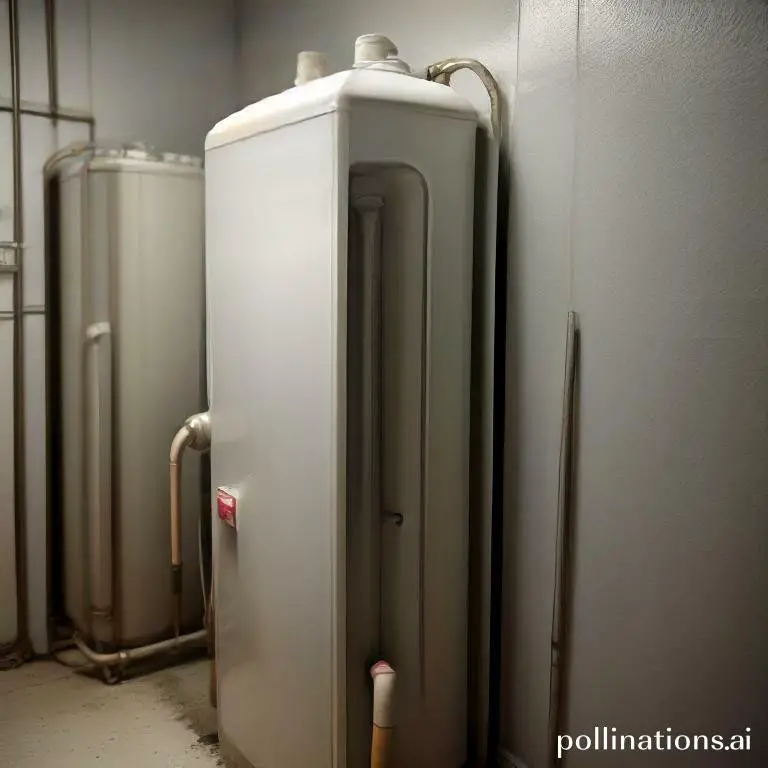
II. Regular maintenance such as flushing the tank and installing a sediment filter can prevent sediment buildup and improve water heater efficiency.
III. Homeowners should be aware of the signs of sediment buildup, such as decreased hot water supply and unusual noises, and take action to address the issue promptly to avoid costly repairs or replacement.
Sediment buildup in water heaters can have a significant impact on energy efficiency. Over time, minerals and debris can accumulate at the bottom of the tank, creating a layer that insulates the water from the heating element.
This insulation forces the water heater to work harder and use more energy to heat the water to the desired temperature. Regular sediment removal is crucial to maintaining optimal energy efficiency and prolonging the lifespan of the water heater.
By removing sediment, you can ensure that your water heater operates efficiently, saving you money on energy bills and reducing your carbon footprint.
How Sediment Buildup Occurs
Sediment buildup in water heaters can have detrimental effects on their performance and lifespan. Embracing the source of sediment and its impact is crucial for maintaining the efficiency of your water heater.
1. The source of sediment in water heaters
Sediment primarily originates from the minerals and impurities present in the water supply. These particles settle at the bottom of the water heater tank over time, forming a layer of sediment.
Mineral-rich water, such as hard water, tends to have a higher sediment content. As the water is heated, these minerals separate and precipitate, leading to sediment buildup.
Additionally, older pipes and plumbing systems can contribute to sediment accumulation. Corroded pipes release particles into the water, which eventually find their way into the water heater, exacerbating sediment buildup.
2. The effects of sediment buildup on water heater performance
Sediment buildup can negatively impact the efficiency and effectiveness of your water heater. Here are some common effects:
- Reduced heating efficiency: The sediment layer acts as an insulator, making it harder for the heating element to transfer heat to the water. This leads to increased energy consumption and longer heating times.
- Deteriorated performance: Sediment buildup can cause erratic temperature fluctuations, reducing the consistency of hot water supply. It may also lead to low water pressure or clogged pipes.
- Reduced lifespan: The accumulation of sediment can accelerate corrosion and damage the internal components of the water heater, potentially shortening its lifespan.
To prevent these issues, regular maintenance is essential. Flushing the water heater periodically helps remove sediment and maintain optimal performance. Installing a sediment filter or water softener can also minimize sediment buildup.
| Sediment Buildup | Causes | Effects |
|---|---|---|
| Mineral-rich water | Separation and precipitation of minerals | Reduced heating efficiency |
| Impurities in water supply | Accumulation of particles over time | Deteriorated performance |
| Corroded pipes | Release of particles into water | Reduced lifespan |
Regular maintenance and the use of appropriate filtration systems can help mitigate sediment buildup, ensuring your water heater operates optimally for years to come.
Signs of Sediment Buildup in Water Heaters
Water heaters are essential appliances in our homes, providing us with the comfort of hot water for various tasks. Nonetheless, over time, sediment buildup can occur, leading to various issues. Acknowledging the signs of sediment buildup, you can take timely action to ensure the efficiency and longevity of your water heater.
1. Decreased hot water supply
One of the first signs of sediment buildup in water heaters is a decrease in hot water supply. As sediments accumulate at the bottom of the tank, they create a barrier between the heating element and the water. This barrier prevents the efficient transfer of heat, resulting in less hot water available for your needs.
2. Increased energy bills
Sediment buildup can also lead to increased energy bills. As the sediments insulate the heating element, the water heater needs to work harder and consume more energy to heat the water. This increased energy consumption can be reflected in your monthly utility bills, signaling the presence of sediment buildup.
3. Strange noises coming from the water heater
If you notice strange noises coming from your water heater, it could be a sign of sediment buildup. As the sediments heat up and harden over time, they can create popping or rumbling sounds as the water heater operates. These noises indicate that the sediments are interfering with the heating process and require attention.
To address sediment buildup in your water heater, it is recommended to schedule regular maintenance and flushing. Flushing the tank helps remove the accumulated sediments, allowing the heating element to work efficiently and extend the lifespan of your water heater. Consult a professional plumber for assistance or refer to your water heater’s manual for specific instructions.
Methods for Removing Sediment Buildup
Relating to maintaining the efficiency and longevity of your water heater, addressing sediment buildup is crucial. Sediment buildup refers to the accumulation of minerals and debris in the water heater tank over time. It can reduce the heating efficiency of the system, lead to corrosion, and even cause the tank to leak. To ensure optimal performance and prevent potential damage, here are three effective methods for removing sediment buildup:
1. Flushing the Water Heater Tank
Flushing the water heater tank is a simple yet effective way to remove sediment buildup. This process involves draining the tank and flushing out any accumulated sediment. To do this, follow these steps:
- Turn off the power supply to the water heater.
- Connect a hose to the drain valve at the bottom of the tank.
- Place the other end of the hose in a suitable drainage area.
- Open the drain valve and allow the water to flow out.
- Once the water runs clear, close the drain valve and remove the hose.
- Turn on the water supply to refill the tank.
- Turn on the power supply and wait for the water to heat up.
2. Installing a Sediment Filter
Another effective method for preventing sediment buildup is by installing a sediment filter. A sediment filter is designed to capture and remove particles from the water before it enters the water heater. This helps to reduce the amount of sediment that accumulates in the tank, prolonging its lifespan and improving heating efficiency. It is recommended to consult a professional plumber for the proper installation of a sediment filter to ensure optimal performance.
3. Hiring a Professional Plumber for Sediment Removal
If sediment buildup in your water heater is severe or if you are unsure about performing the maintenance yourself, it is advisable to hire a professional plumber. A professional plumber has the necessary expertise and equipment to safely and effectively remove sediment buildup from the water heater. They can also inspect the system for any potential issues and provide recommendations for proper maintenance and prevention of future sediment buildup.

Benefits of Sediment Removal for Water Heater Efficiency
1. Improved Energy Efficiency
Regular sediment removal plays a crucial role in enhancing the energy efficiency of your water heater. Over time, minerals and sediments accumulate at the bottom of the tank, forming a layer that acts as an insulator. This layer prevents the heat from transferring efficiently to the water, causing the heater to work harder and consume more energy. By removing this sediment, you can restore the heat transfer efficiency and reduce energy consumption.
2. Extended Lifespan of the Water Heater
Sediment buildup not only affects the energy efficiency but also shortens the lifespan of your water heater. The sediments can cause corrosion and damage to the tank and heating elements, leading to premature failure. Regular removal of sediment helps to prevent these issues and extends the overall lifespan of your water heater, saving you money on replacement costs.
3. Reduced Risk of Breakdowns and Repairs
When sediments accumulate in the tank, they can interfere with the proper functioning of various components, such as the heating element and pressure relief valve. This can result in frequent breakdowns and the need for costly repairs. By removing the sediment regularly, you can minimize the risk of these breakdowns and ensure that your water heater operates smoothly and reliably.
| Benefit | Description |
|---|---|
| Improved Energy Efficiency | Enhances heat transfer efficiency and reduces energy consumption. |
| Extended Lifespan | Prevents corrosion and damage, leading to a longer lifespan. |
| Reduced Risk of Breakdowns | Minimizes the need for repairs and ensures reliable operation. |

Maintenance Tips for Water Heater Efficiency
Proper maintenance is essential for ensuring the efficiency and longevity of your water heater. By observing these tips, you can keep your water heater running smoothly and avoid costly repairs.
1. Regular Flushing of the Water Heater Tank
One of the most important maintenance tasks for a water heater is flushing the tank regularly. Over time, sediment and minerals can accumulate at the bottom of the tank, reducing its efficiency and potentially causing damage. To flush the tank, follow these steps:
- Turn off the power supply or gas valve to the water heater.
- Attach a garden hose to the drain valve at the bottom of the tank.
- Place the other end of the hose in a safe area where the hot water can drain.
- Open the drain valve and allow the water to flush out. Be careful as the water will be hot.
- Continue flushing until the water runs clear.
- Close the drain valve and remove the hose.
- Turn on the power supply or gas valve to the water heater.
Regularly flushing your water heater tank will help remove sediment and maintain its efficiency.
2. Installation of a Sediment Filter
In addition to regular flushing, installing a sediment filter can further improve the efficiency of your water heater. A sediment filter traps sediment and debris before it enters the tank, preventing build-up and extending the lifespan of your water heater. Consult a professional plumber to determine the appropriate sediment filter for your water heater.
3. Annual Professional Maintenance Checks
To ensure optimal performance, it is recommended to schedule an annual professional maintenance check for your water heater. A qualified technician will inspect the unit, clean any components, test for leaks, and address any potential issues. Regular maintenance checks can catch problems early on and prevent major breakdowns.
| Tip | Description |
|---|---|
| Regular Flushing | Flushing the water heater tank to remove sediment and minerals. |
| Sediment Filter | Installing a sediment filter to trap debris and extend the water heater’s lifespan. |
| Annual Maintenance Checks | Scheduling professional maintenance checks to address any issues and prevent breakdowns. |
Bottom Line
Removing sediment from your water heater can have a significant impact on its energy efficiency. Sediment buildup can cause your water heater to work harder and use more energy to heat water, leading to higher energy bills and a shorter lifespan for your appliance. Regular maintenance, including flushing your water heater and installing a sediment filter, can help prevent sediment buildup and improve energy efficiency. It’s important to consult with a professional plumber to ensure proper maintenance and avoid damaging your water heater. By taking steps to remove sediment and maintain your water heater, you can save money on energy costs and extend the life of your appliance.
Overall, sediment removal is an important aspect of water heater maintenance that can have a significant impact on energy efficiency. By staying on top of maintenance and consulting with a professional, you can ensure that your water heater is running efficiently and effectively, saving you money and reducing your environmental impact.
Read More:
1. Sediment Clogging And Water Heater Pressure Relief Valve
2. Using Descaling Agents For Sediment Removal










